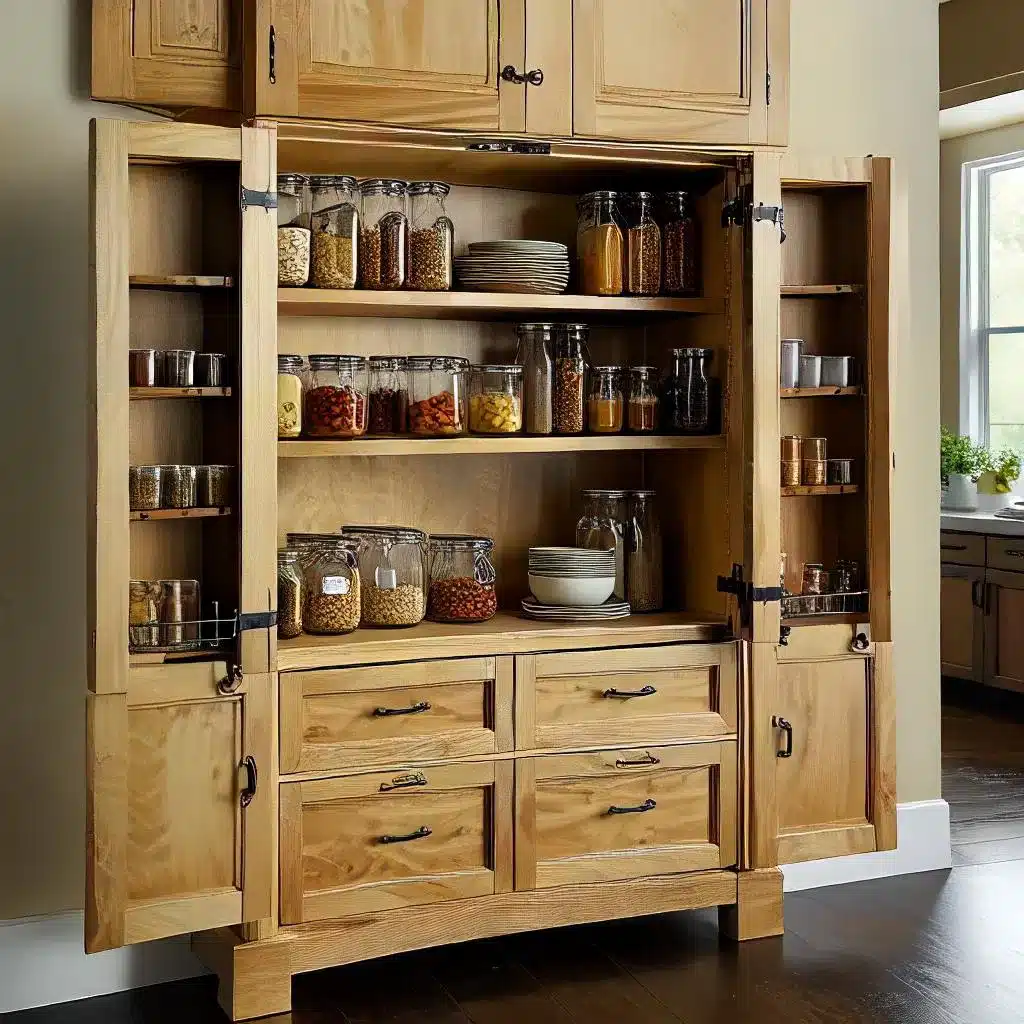Table of Contents
Choosing the right kitchen pantry cabinet size can dramatically improve how your kitchen looks and functions, and will affect your custom pantry cost. A well-sized cabinet helps keep everything organized and easily accessible, making cooking feel seamless rather than stressful. The ideal size depends on your kitchen’s layout, available space, and storage needs. Getting the measurements right is essential—not just for aesthetics, but also for safety and ease of use. With the right cabinet, your kitchen becomes a more efficient and enjoyable space. This article explores how you can choose the right size kitchen pantry cabinet.
Assessing Available Space
Before discussing dimensions, it is important to assess the kitchen layout. The room dimensions in which the kitchen pantry cabinets will be placed can give the maximum measurement of what it can fit. Consider doorways you may have to get through and windows that need access to light; otherwise, it may as well just be furniture to a movement and a light block. It is advisable to consider this initial step, as it prevents expensive compounding errors while streamlining the installation.
Understanding Your Need for Storage
Every home has different storage needs. A household that prepares elaborate meals daily will need far more pantry space than one that cooks just a few dishes each week. Start by taking inventory of your pantry, grouping items like dry goods, spices, canned foods, and small appliances. This helps determine how much storage you actually need and prevents choosing a cabinet that wastes space. For added versatility, consider pantry cabinets with adjustable shelves to accommodate items of varying sizes and make organization easier as your needs change.
Evaluating Cabinet Styles
There is a range of cabinet styles providing different aesthetics and functionality. Freestanding cupboards are a flexible choice because you can move them if necessary. In contrast, built-in designs for a seamless look complement the interior already in place. Choose a style for your kitchen that matches the overall design theme, as it helps to create cohesion and adds a great visual appeal to your kitchen design. Minimizing designs will likely suit sleek, modern spaces, while ornate detailing will flourish in traditional ones.
Making Functionality Your Priority
Functionality is key to choosing the right size. Look at door types, too—how will a swing-out, sliding, or bi-fold door interact with the rest of the kitchen? For tight quarters, sliding doors work well, and if you like the look of the swing-out doors, they are easier to access. Also, adding elements such as pull-out shelves, lazy Susans, or door-mounted racks can improve accessibility and organization.
Material Considerations
The choice of material can affect longevity and looks. Solid wood has a classic look and feel, but be prepared to pay for it. Laminate is an affordable option, and it comes in multiple finishes. Metal cabinets provide an industrial vibe, and they are built to endure heavy use. Balance the pros and cons of each material against the kitchen’s style and budget.
Options to Customize Your Experience
Customization offers a personalized pantry cabinet to meet your needs. If your kitchen has an out-of-the-ordinary shape or an oddly sized space that needs filling or unusual storage requirements, custom cabinets can work for you. Bespoke solutions are pricier, but they provide unparalleled customization. Hire a pro to get designs that allow maximum housing functionality and fit.
Budgeting Wisely
Cabinet choosing has its place in financial planning. Pre-planning the budget cuts down on options and also prevents you from overspending. Include costs for materials, installation, and any possible customization. Investing in quality can lead to long-term savings as it may not require frequent replacement or maintenance. By balancing cost with value, you can ensure satisfaction without putting your wallet in a pinch.
Considering Future Needs
Different lifestyle changes would require different storage arrangements. Picking a pantry cabinet that is flexible and can easily grow as you grow is key to being able to adjust when the time comes. Shelves that can be adjusted, pieces that can be modular, or sections that can be expanded provide options. This foresight helps to keep the cabinet functional when needs compete with each other. So, thinking ahead for possible shifts can be a part of lasting contentment.
Conclusion
When choosing a kitchen pantry cabinet unit size, consider a few details about the space, how much storage space you will need, and the style. By balancing functionality with an understanding of material selections and potential future use, homeowners will be able to select a cabinet that serves its purpose both stylishly and practically in their kitchen. With proper planning and evaluation, they can blend seamlessly into your cooking space and yield an organized, effective, and pleasurable cooking environment.


